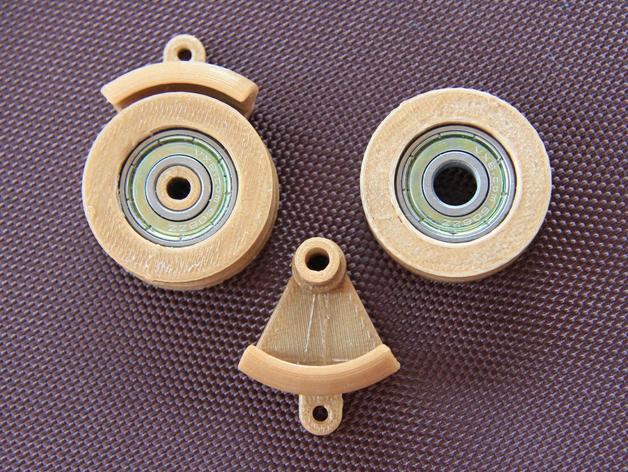
Deluxe pulley for strings and ropes (openscad / parametric)
thingiverse
This OpenSCAD script generates a pulley for strings and ropes, utilizing a 608 ZZ bearing. The inexpensive and common bearings are used in skateboards and rollers, costing about $1-2 on eBay. With the source code, users can adjust various properties or switch to another type of bearings. The groove cover, attachment leg, and top housing are optional components. The pulley is designed to be screwed or nailed to a support along its axis. However, the optional top cover enables hanging it. A photo demonstrates how one pulley was reinforced for lifting 50kg. Choose from provided STL files like 'pulley608_common.stl' with different diameters and optional top covers. Alternatively, download OpenSCAD (www.openscad.org) if you don't have it yet. Customize the source code on the left side of the screen: 1. Set "nail_d" to your nail or screw diameter (default is 4.2mm), representing the pulley axis. Choose a strong and long nail/screw! 2. For a leg to prevent cover rotation, adjust 'cover_leg_inner_d' for the secondary screw hole size and 'cover_leg_outer_d' for leg width. The hole diameter is 3mm by default; set 'cover_leg_outer_d' to zero to hide the leg. 3. Modify 'cover_angular_size' to zero if disabling the cover or specify an angle for specific usage (e.g., 170° for a U-turn or 80° for a right-angle). 4. Change 'pulley_cable_d' for the pulley diameter, ensuring it exceeds the bearing diameter. Enable parts in the script by commenting and uncommenting lines. Export as STL after enabling parts and rendering. To install the bearing into the bottom part, use a vice with hardwood pieces or screws, washers, and nuts. The last resort is using a hammer and wood. Adjust 'brg_tightness' in the source code for proper fitting if your printer isn't calibrated (default: zero tolerance). Printing takes about 30 minutes for the pulley and bottom part with 0.2mm layers, 0.4mm nozzle, 60mm/s speed, and 100% infill.
With this file you will be able to print Deluxe pulley for strings and ropes (openscad / parametric) with your 3D printer. Click on the button and save the file on your computer to work, edit or customize your design. You can also find more 3D designs for printers on Deluxe pulley for strings and ropes (openscad / parametric).
